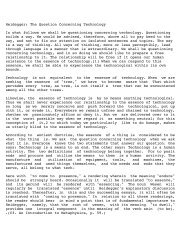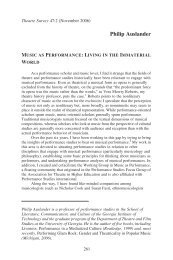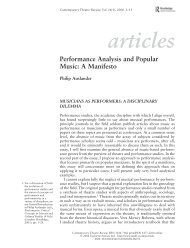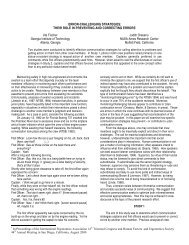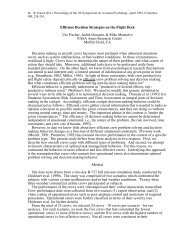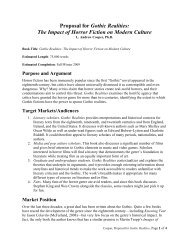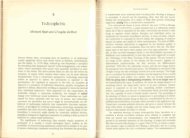INTERACTION DESIGN PRINCIPLES FOR INTERACTIVE ...
INTERACTION DESIGN PRINCIPLES FOR INTERACTIVE ...
INTERACTION DESIGN PRINCIPLES FOR INTERACTIVE ...
You also want an ePaper? Increase the reach of your titles
YUMPU automatically turns print PDFs into web optimized ePapers that Google loves.
Tom Buehler provides a helpful tutorial on making computer graphics NTSC<br />
compliant, and addresses issues related to luma values, color values, lines and edges, as<br />
well as safe zones (2003).<br />
4.2.6 Typography<br />
Text poses difficult challenges on television screens, as viewers are not<br />
accustomed to reading static blocks of text on screen. Other contributing factors include<br />
poor display quality of still images, the difficulty of rendering detail at low screen<br />
resolutions, color bleeding, and interlacing flicker. At the same time, the relatively large<br />
text size required for legibility on a television screen makes it difficult for designers to<br />
create effective screen layouts.<br />
As a general rule, fonts must be used with care. Very light weights or fonts with<br />
very narrow and broad strokes should be avoided. It is a good idea to use simply<br />
constructed sans-serif fonts and use anti-aliasing to increase readability (Quesenbery &<br />
Reichart, 1996). Anti-aliasing, also known as smoothing, is a technique of blending<br />
bitmap-based images and text to reduce the jagged appearance of aliased text. The<br />
process of anti-aliasing blends the edge pixels in areas of transition to give the text a<br />
smoother looking appearance.<br />
BBC interactive television services use Tiresias, a typeface specifically developed<br />
for television in conjunction with the Royal National Institute of the Blind, and adopted<br />
as a standard by the UK Digital Television Group as the resident font for interactive<br />
television (http://www.tiresias.org/fonts/design_report_sf.htm). This alphabet displays<br />
well at small sizes, and functions when stretched or squashed by televisions attempting to<br />
compensate for 4:3 or 16:9 ratios. Careful attention has also been paid to character<br />
91



